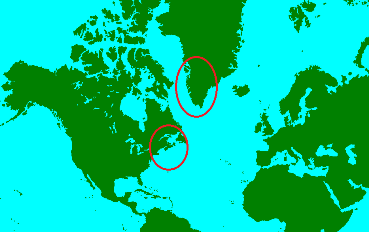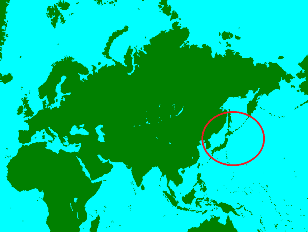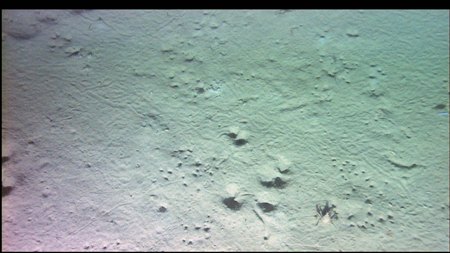Habitat
Distribution:
 Atlantic Ocean
Atlantic Ocean
Snow crabs can be found in the Atlantic Ocean from Maine, north
to Greenland. Majority of the population found in this area
are along the Canadian Provinces adjacent to the Gulf of St.
Lawrence such as Newfoundland, New Brunswick, and Quebec.
This location is notated by the red circles on
the map (left).
 Asia
Asia
The Sea of Japan and the Sea of Okhotsk are homes to the snow
crab populations that live off of the
Eastern coast of Asia in
countries including Japan, Russia, North Korea and South Korea.
This location is notated by the red circle on
the map (left).
 United States
United States
Locations of snow crabs accessible by the United States are found
mainly in Alaska. The Bering Sea (West coast of Alaska),
Beaufort Sea (North coast of Alaska), and the Chukchi Sea (Northwest
coast of Alaska) are all bodies of water in which Chionoecetes
opilio can be found. As mentioned before, there is a population
of snow crabs that lives off of the coast of Maine in the Atlantic
Ocean.
This location is notated by the red circles on
the map (above).
Niche:
Snow crabs populations are found strictly in marine environments, mainly in the Northern Atlantic and Northern Pacific Oceans. The largest populations of snow crabs are found in areas that have a soft, sandy or muddy bottoms, specifically bottoms that have greater than a 20% mud content. Chionoecetes opilio also prefer cold water temperatures no higher than three degrees Celcius. Water depths that this organism is found at range from 40 to 60 meters (130-200 feet) which is primarily dependant upon the location of the prey and the time of the year.
Muddy Bottom
The soft, sandy and muddy bottom can serve as protection for the snow crab. When threatened by a predator, the crab can easily burrow into the muddy sand, protecting it from predators. Major predators of Chionoecetes opilio include: Seals, groundfish, and other snow crabs.
The soft bottom also serves as a feeding ground for the snow crab. Chionoecetes opilio are carnivorous and feed primarily on small fish, clams, polychaete worms, brittle stars and small crustaceans. These organisms can be found along and within the soft substrate at the same depths the snow crab is found.
<Classification Home Adaptation>
How does the Snow Crab compare to the Red Rock Crab? Click here to find out!
